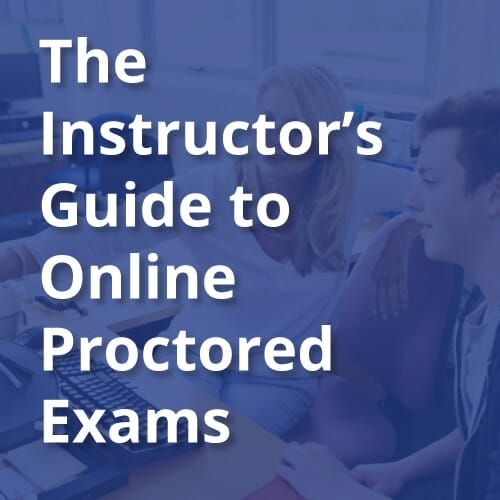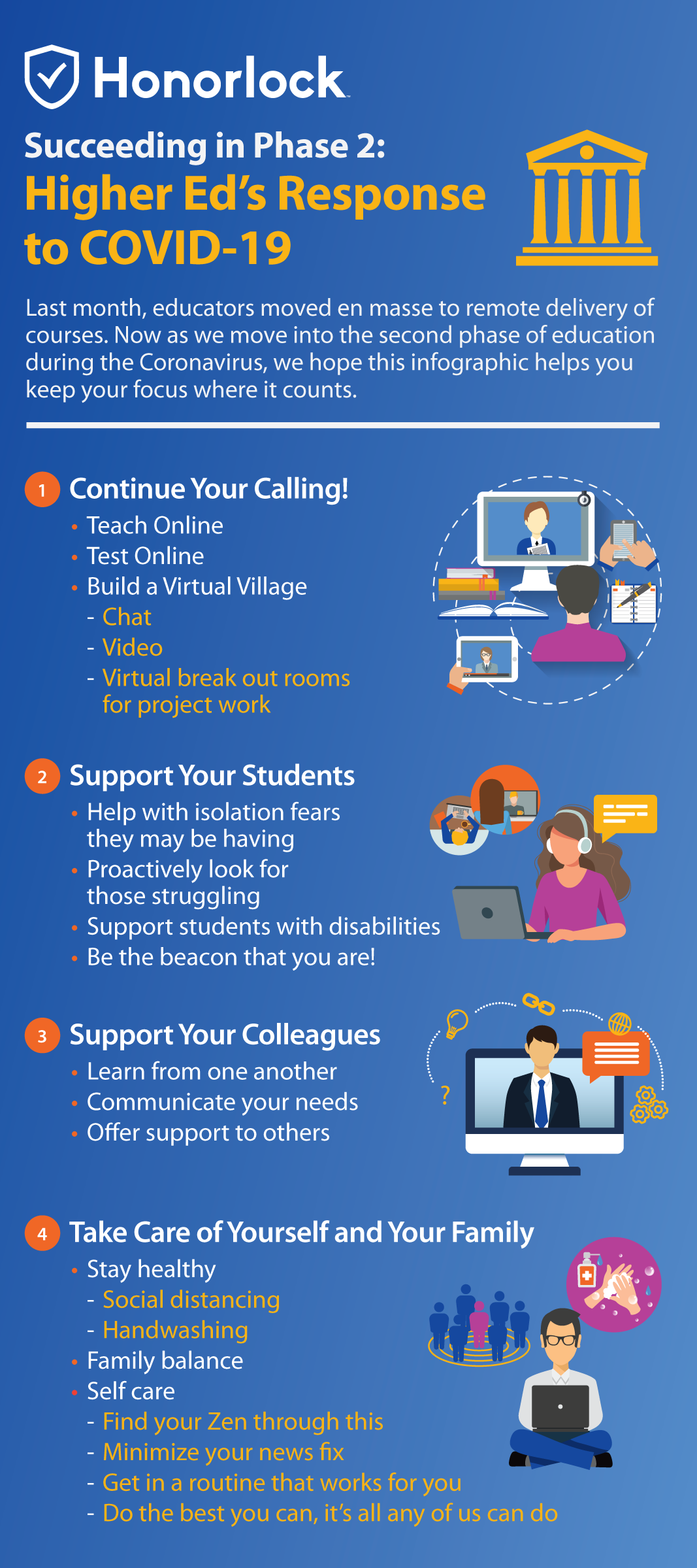Did anyone get the number of that bus that just hit us? If you felt a bit that way when COVID-19 started, you were not alone.
With the benefit of a bit of time in the rearview (and some of us earning our e-learning stripes), our viewpoint is beginning to shift from “do what?!?” to “how can I make this better?”
Click below to get information about implementing online proctoring when moving to online learning related to COVID.
On April 22, 2020, InsideHigherEd published an interesting article on a new survey that asked 826 faculty members and administrators at 641 American colleges and universities how they fared in the recent “forced march” into digital learning.
The results were not surprising.
The major takeaways were:
- (90 percent) engaged in some form of emergency distance/virtual education to conduct or complete the spring term
- Almost two-thirds said they changed “the kinds of assignments or exams” they gave to students
- Nearly half said they lowered their expectations for the amount of work students would be able to do (48 percent)
One of the most interesting aspects of the survey from our perspective was the question “What assistance would be most helpful for faculty” at the time of the survey.
Respondents’ number one answer was “Information on how to best support online students.”
Honorlock just so happened to host a webinar on change management that same week. Here is a link to the recorded webinar if you are interested in learning more about change. Hundreds of people registered and attended, so we know it was a topic that resonated.
Within that webinar, we had curated a list of resources for our attendees on the subject of how to support student learning during the transition.
We want to take the opportunity to share them in this blog as well. Two of the resources (Rutgers and Michigan) are more of an infographic, while the others were full-blown manuals on how to offer support.
While these are written primarily for their own institutions, there are great tidbits that can be gleaned. Here are the links and a short summary of each of the resources.
This is an overview of how to stay organized and adjust study habits, including a template for helping students set up a schedule that works for them, as well as tips for working in teams.
This handy reference offers tips on how to get online, find WiFi if you don’t have it, and managing your time.
The Boise State University resource is an exhaustive guide to everything from taking care of yourself (including sections for LGBTQ students and those with disabilities) to an outline of various platforms and technologies that can be used to facilitate learning.
Lehigh University includes a short video on the 5 Steps to Online Classes
The San Francisco State version contains how to get help front and center at the top of the guide. Sometimes that information is buried deep in a document, and when students are in a panic, it’s helpful to have those contact numbers front and center.
But back to the survey numbers for just a moment.
Educators were able to use tools like our digital assessment software to not only adjust to a new way of instructional delivery – a herculean feat – but also to make dispensations for the amount of work as well as the type of work they assigned to students.
This change was not easy for anyone. Our students were leaving campus for home (if they were one of the lucky ones), figuring out how to participate in learning, juggling space, schedules, and mindset to navigate the pandemic, keeping families safe and perhaps even dealing with food insecurity, the list goes on.
Through it all, you kept the educational fires burning. It may have felt to you like a bit of a dumpster fire at first, but you persevered and whether you realize it or not, you helped your students by modeling behaviors that helped them see “we can get through this together.”
Your number one need from the survey (and Honorlock would concur from our webinar results), was to be of help to your students. Honorlock can think of no finer commentary on the state of education in the country today.














